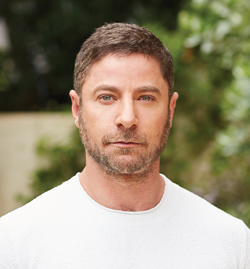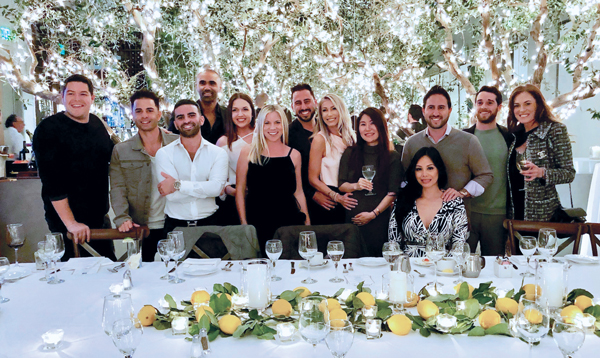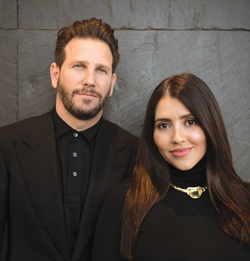UPDATED, July 30, 10:18 a.m.: A pessimist might say that the Golden Age for the residential broker has long since passed — that Zillow and broker-free platforms like Purplebricks, as well an increasing number of pocket listings services, are chipping away at the agent’s role in real estate to the point where it might one day disappear.
But conversations with top Los Angeles luxury brokers paint a different picture, one requiring more agents in the field as big producers increasingly staff up their teams with specialists in order to offer a greater swath of potential clients data-rich market intel — with, of course, a personalized touch not found online.
“The way the market is right now, it’s very hard to be an individual agent,” said Compass broker Sally Forster Jones, who oversees a team of 25. “I couldn’t possibly do all the things my staff is doing as well as they are. The goal is to have everyone do the things that they’re most qualified to do.”
And with high-end listings languishing on the market for months, a big team can get more eyeballs on a property, according to Douglas Elliman broker Matt Altman. “A team is always better,” said Altman, who with his brother Josh oversees a team of 11. “If I have a new property, 700 people see it instead of 30 people.”
Below, top L.A. agents tell The Real Deal how they make the team structure work for them.
Aaron Kirman
Pacific Union
 In the last year, Aaron Kirman’s team has grown dramatically. In early 2017, he had seven people with him. Today, there are 59 people — 14 staff and 45 agents. The expansion was largely made possible when Pacific Union acquired the John Aaroe Group, which Kirman has been with for more than five years.
In the last year, Aaron Kirman’s team has grown dramatically. In early 2017, he had seven people with him. Today, there are 59 people — 14 staff and 45 agents. The expansion was largely made possible when Pacific Union acquired the John Aaroe Group, which Kirman has been with for more than five years.
“Starting a team is extremely complicated, extremely staff-oriented and extremely expensive,” said Kirman. “It wasn’t really until I found my home at Pacific Union that we were able to solidify [the team].”
Even with the backing of Pacific Union, growing the team was far more difficult than Kirman expected. He said the process was “painful.” The biggest challenges were finding a space, determining what the right staffing looked like and shifting his thinking into more of a leadership mentality, he said.
Kirman’s team is now a mix of younger agents and more seasoned ones — people who may have had previous careers in Hollywood, fashion or the NFL alongside those who’ve spent years in real estate. Many newer agents take on their own listings, but some learn the business by first assisting veteran agents with open houses and inspections. One of Kirman’s agents started as his intern six years ago.
Kirman doesn’t take the leadership role lightly. It comes with a specific objective: He wants everyone on his team to make at least $1 million a year.
When it comes to how commissions are split on the team, Kirman said, it’s very individualized. Industry veterans get a different split than newer agents, he said. For some of the top producers on his team, he said his margins might be “nominal — because they don’t want to join my team for a number that doesn’t make sense to them.”
“We have a different way of making money off of every person,” he said. “It’s not necessarily the split. Sometimes it’s education, sometimes it’s technology, sometimes it’s a niche sector, sometimes it’s a cultural moment.”
But it’s all part of his larger goal to be the No. 1 team in the country focusing on luxury and ultraluxury. The broker placed 11th in TRD’s spring luxury broker ranking, with $243.5 million* in annual sales volume.
To work toward being No. 1, Kirman said, he’s instilling a sense of collaboration in the team.
“We literally have office meetings where we give all of our pocket [listings], all of our buyers and sellers. We don’t keep anything secret,” he said.
Yawar Charlie is a big believer in the collaborative environment. He joined Kirman two years ago from Sotheby’s and has taken on a bigger role as of late, in particular with a recently created “steering committee.” Charlie and four other seasoned agents started it as a way to mentor younger agents — going on listing appointments, looking at properties and helping with negotiations.
“The challenge of our industry is that we’re all individual islands, and everyone can be out for themselves; it creates a lot of pressure,” said Charlie, who’s director of estates. “I’ve always enjoyed being part of a team. I appreciate when people can bring things to the table that I don’t have.”
Both Charlie and Kirman referenced “sharks” in the industry and said they had no interest working with those types of people.
“We want to be dolphins, not sharks,” Kirman said. “Look at dolphins — they swim together, they’re social, they’re sweet. Sharks die alone.”

The Altman Brothers
Douglas Elliman
Many agents say their teams are like a family, but for Matt and Josh Altman, that’s a given. “We’re brothers, best friends. There’s not a closer team than the two of us,” Matt said of the team that placed eighth in TRD’s spring ranking, raking in $331.5 million in annual sales*. “And that’s how we treat our whole business. The most important thing is our team.”
Today, the Altman Brothers team consists of 11 people, three in support-staff roles and eight agents. Matt said the agents all have their own listings and also provide assistance to him and Josh when needed. He added that all the agents work on commission but declined to discuss the structure. Matt and Josh both have assistants they rely heavily upon, and it isn’t uncommon for someone in that role to move up. Matt said two assistants have become agents on their team.
Take, for example, Jacob Greene, a 24-year-old agent Matt called a “prodigy” and “the third Altman brother.” When Greene was 17, he saw Josh (who stars in “Million Dollar Listing Los Angeles”) driving in L.A. and followed him. “It was literally fate,” Greene said. “I recognized his car — he was driving an old Cobra at the time — and chased him down in my mom’s car. I pulled in front of him and said, ‘My name is Jacob Greene, give me one meeting.’”
And Josh did. “He said, ‘Go back to school, get your license, and you’ll be the first intern I hire,’” Greene recalled.
So he got his real estate license at 18 and worked as an unpaid intern for Josh and Matt every summer during college. Greene started at the very bottom, “getting coffee, opening doors, setting up appointments, taking care of the not-so-glamorous stuff.” But that training helped Greene close a $16.5 million deal right out of college. Last year, he said, he did about $40 million in sales of his own.
One thing that’s especially attractive in potential hires is a deep knowledge of L.A., the Altmans said. Matt said they want “local people who are superstars,” which means knowing everything from the best streets to why people prefer certain areas.
But when it comes down to it, Matt said, he and Josh are looking for people who are hungry.
“We’re guys who came from nothing. We’re hustlers,” he said. “I’d rather meet someone who didn’t go to college and worked for those four years than someone whose résumé talks about how wonderful their education was. We’re about getting out there and doing the work.”
David Parnes and James Harris
The Agency
 David Parnes and James Harris they knew from the beginning that with a team, they “wanted to keep things simple.”
David Parnes and James Harris they knew from the beginning that with a team, they “wanted to keep things simple.”
In addition to Parnes and Harris, the core team is made up of just two other people: Michelle Ficarra, who handles contracts, negotiations and escrows, and Alana Mesica, who focuses on showings, social media and marketing. While all four are licensed agents, Parnes and Harris are the front-facing agents, while Ficarra and Mesica are behind the scenes. There are two additional people who joined the team more recently and work as agents.
Parnes and Harris — who came in fifth in TRD’s spring ranking, with $376.5 million in annual sales* — have been working together for over a decade. With the exception of the two new agents, this particular team has been in place for less than three years.
“We all have defined roles, but we all know what the other person wants and needs,” said Harris. “The left hand has the right hand taken care of.”
Ficarra, who’s worked in real estate for almost 30 years, said she brought structure to the team. They currently have over $1 billion in signed inventory and as many as 10 properties in escrow at any given time, which makes it critical to ensure “nothing falls through the cracks,” she said.
“Michelle is telling us what needs to be done, what needs to be followed up on, what’s expiring, what we need to go after,” Harris said. “We follow Michelle’s lead.”
Mesica, meanwhile, backs up Parnes and Harris on the listing side. She deals with the MLS, open houses, ads and events that are filmed for “Million Dollar Listing Los Angeles,” on which Parnes and Harris both star.
The four of them are in “constant contact,” said Ficarra. There’s a running group text, they’re all CC’d on every email, and they can practically “read each other’s minds,” said Harris.
While they declined to discuss the commission structure, Harris said, “Everyone is incentivized to be successful.”

Sally Forster Jones
Compass
Sally Forster Jones has been in the real estate industry for more than four decades, which has given her plenty of insight into how to grow a team.
“I spend a lot of time training,” she said. “When I’m comfortable with a staff person, then I’m not micromanaging, I’m letting them do their own thing.”
Jones said that early on in her career, she realized the only way to grow her business was to focus on selling and delegate the tasks not directly tied to producing. She started with an assistant when she was doing about $25 million in annual sales, then expanded the marketing team, then brought on staff who could help with escrow, “and it just evolved from there.”
Today, that team, which closed $120 million in annual sales in TRD’s spring ranking*, has grown to about 25 people. About 10 of them are dedicated to marketing, transactions, listings and general administrative roles, while the rest are agents. Jones said they have agreements that lay out commission splits but declined to go into detail about it.
An emphasis on teaching is key to the office dynamics, said Jones, who has used an outside business coach for more than 12 years. He meets with people on her team individually and as a group. On top of that, Jones’ sales director, Nicole Plaxen, meets individually with everyone on the team at least once a week.
“We go over everything that’s going on,” Plaxen said. “Objectives, obstacles, what leads they have, what they can convert and what I can get involved in.”
Plaxen has been with Jones for 11 years, 10 of which she spent as a transaction coordinator. About a year ago, she began doing one-on-ones and “getting down to the nitty-gritty.” In particular, she looked at conversion rates, breaking down how many buyers and sellers were coming from open houses, networking, door-knocking or cold-calling.
Plaxen said these one-on-ones helped the team navigate market shifts in the first quarter of 2018. She was able to evaluate which strategies weren’t working and help agents “maneuver through the ebbs and flows.”
Rayni & Branden Williams
Hilton & Hyland
 Rayni and Branden Williams haven’t always had the right team. Rayni admits that in their first five years, there was a lot of turnover.
Rayni and Branden Williams haven’t always had the right team. Rayni admits that in their first five years, there was a lot of turnover.
“It’s hard to find your crew. It takes time to find a dynamic that works,” she said. “We play music, talk about art, talk about marketing. We always have inspiration, and we pepper in spirituality; if people think that’s hokey and cheesy, then it’s not the right fit.”
For the last six years, Rayni said, she and Branden have had a “solid team,” which now consists of seven people. They believe in empowering everyone who works for them, which is one of the reasons they require everyone — from the marketing director to the receptionist — to be a licensed agent. Rayni said that ensures a higher level of service for clients but also opens the door for anyone on the operations side to become a working agent. That’s what happened for David Assman, who spent two years as their marketing director but became a buyer’s agent last August.
“I got inspired by watching them work,” Assman said. “I wanted to jump into the fire and start working with buyers and sellers.”
Assman said the environment at Williams & Williams is supportive but also driven, which Rayni said is something they’ve worked hard to cultivate.
“We don’t like the mentality of punch the clock, of being entitled,” Rayni said. “We want the mentality of ‘Whatever it takes to get things done, no excuses.’”
She declined to go into detail on their commission split, but said they determine it on a case-by-case basis.
Williams & Williams, which came in fourth in TRD’s L.A. spring ranking with $403.3 million in annual sales*, rarely adds new people, partly because of the confidentiality surrounding the team’s high-profile clients.
When they do bring agents on, they gravitate toward people who don’t have preconceived ideas of how to do things or what the workplace should look like, Rayni said. “Branden and I started from nothing. We were grinding, and that’s what we instill in our staff. If you work hard on our team, you will fulfill your dreams, be monetarily rewarded and spiritually fulfilled.”
Clarification: Sales volumes in TRD’s spring broker ranking were derived from an analysis of closed single-family home sales priced at $4 million or above as reported by the MLS and L.A. county property records. Off-market sales were counted if brokers could provide proof they were paid a commission. Agents/teams were credited with both listing and buying sides, including deals where they were the co-broker; if agents represented both parties, they received full credit for each side. Agents who work as a team were combined.
